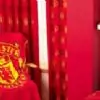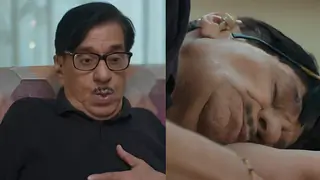SENI GHARANA AND RAMPUR STATE
During the past two decades, when music conferences became very popular, every musical artist proclaimed that he came front a particular famous Gharana, that is, a particular line of hereditary musical tradition and particular school of musical styles created or followed by great music teachers and their disciples.
Actually, there were two main Gharanas of Hindusthani music worthy to be considered, during and after the reign of Allauddin Khilji, the Pathan Emperor of Delhi. These were : --
(1) The kalawanta Gharana, founded by Baiju Bawra and propagated by Nayak Gopal which included the singers of the Dhrubapada style of music and the instrumentalists who played on Saraswat veena in accompaniment to the vocal Raga Alap and Dhrubapada songs.
(2) The kawal Gharana, founded and propagated by Amir Khusru and later on by Sultan Hussain Sarki of Jaunpur.
These Gharanas included the singers of Kawali songs and the instrumentalists who played on Sitar in accompaniment to the Kawali songs and Taranas. Later on, a third Gharana was formed by the instrumentalists who used to play on Shanai and Tabla. With the increase of the number of female singers and dancing girls in the Court, there arose a fourth Gharana of instrumentalist accompanying them. The Ostads of the third and fourth Gharana were called Mirasis and Dhadis.
SWAMI HARIDASJI OF BRINDABAN
During the reign of Md. Adil Shali at Delhi, there were more than one hundred musicians in the Court, who were mostly the Kawals, Mirasis and Dhadis. After the fall of the Pathan Empire, Haridas Swami, the great saint of Brindaban was the main personality in the golden age of Hindusthani music, when the system of Rag-Alap and the Dhrubapada style of music founded by Baiju Bawra, attained perfection of expressions, and was held in the highest estimation by the royal courts existing in that period.
Under the influence of his inspiration, Raja Man Tomar of Gwalior brought four Nayaks or authorities of Dhrubapada Hindusthani music in his court,who were named - (I) Bhanu, (2) Chharju, (3) Dhundi. (4) Chanchal Sashi. Really, the Gharanas of Hindusthani classical music were formed by Swami Haridasji and these four Nayaks, who were all Kalawantas.
During the reign of the Emperor Akbar, Mian Tansen, the disciple of Swami Haridas, was called the greatest of all musicians and was the main centre of a great musical upheaval. All the disciples of other Nayaks became his disciples and his style of Alap and Dhrubapada was regarded and accepted as the best ever known. He enriched the Dhrubapada style with some Persian ornamentations. Mian Tansen was the leader of a group of famous musicians, namely :-
(1) Khoda Bux,
(2) Masnad Ali,
(3) Ramdas,
(4) Chand Khan,
(5) Suraj Khan,
(6) Khande Rao,
(7) Suragnan Khan,
(8) Jagapat (Mridangi).
SAINT HARIDAS'S DISCIPLE - MIAN TANSEN
Mian Tansen was the greatest disciple of Swami Haridas and a foster child of Pir Md. Ghaus of Gwalior while others were either his colleagues or disciples of other Nayaks of Gwalior. All these musicians were attached to the Court of Delhi. The other notable disciples of Haridas Swami were (1) Brija Chand. (2) Gopal Lall, (3) Maharaja Samokhan Singh of Ajmir, Singhalgarh, who was the greatest Veena player of that period. From the period of Akbar, notable Gharanas of Northen India were formed by the descendants or disciples of the above-mentioned musicians. But as Mian Tansen was accepted as the greatest of all musicians by Emperor Akbar, his influence on other musicians was paramount. He formed the main Gharanas, that is, the Seni Gharanas of Hinduathani music.
After the death of Mian Tansen, three Gharanas representing his traditions were notable. The first Seni Gharana was formed by his youngest son, Bilas Khan ( Tan Tarang ) at Delhi Darbar. This Gharana represented the choicest Dhrubapada style in Goudi Bani. The second Seni Gharana was formed by another son of Tansen named Surat Sen, who used to sing Dhrubapadas in Dagar Bani and whose descendants subsequently settled at Jaipur,
The third Seni Gharana was formed by Misri Singh, the celebrated Veena player, who was the son of Maharaja Samokhan Singh and married Saraswati Devi, the daughter of Tansen. His descendants formed the main Gharana of Veena music and used to sing Dhrubapadas in both Dagar and kahandar Bani.
Besides these three Seni Gharanas, the other famous Gharanas were formed by Brija Chand and Suradas at Mathura, whose disciples were the Brahmin priests while Chand Khan and Suraj Khan were the founders of Tilmandi Gharana of Dhrubapadas in Punjab.
We find the name of the Agra Gharana specializing in Dhamar style formed by Hazi Sujan Khan, Which was famous during the reign of Emperor Shah Jahan. With the decline of classical music, musicians of all the Gharanas underwent severe hardships during the reign of Aurangjib. But Mahammad Shah Rangile, the Badsha, revived the Delhi Darbar in the early eighteenth century with the musicians of all Gharanas assembled at Delhi.
GREAT VEENKAR AFTER TANSEN
Niamat Khan Veenkar who was a descendant of Misri Singh (son-in-law of Tan Sen) and later on received the title 'Shah Sadarang' in the Darbar of Md. Shah is ranked as the second great musician of India after Mian Tansen. He was the high priest of Md. Shah's Darbar and invented new techniques of the veena music and Dhamar. He also created the classical Kheyal and founded the famous kawal Gharana through his disciples, whom he taught classical Kheyal. The Kawal Gharana thus formed, was regarded as the authoritative line of Kheyal. Other Gharanas like Agra Gharana and Gwalior Gharana of Kheyal, grew up from the main Kawal -Gharana.
During the latter part of eighteenth century, progressive disintegration of the great Mughal Empire was followed by the provincial Subadars and the subordinate Rajas becoming virtually independent and the Emperor of Delhi had only the symbolic possession of supreme authority and honour.
As the financial position of the Delhi Darbar became precarious, the most famous musicians of Delhi took shelter in other courts. At this stage the Seni musicians who came attached to different courts of India, devoted themselves more and more to the culture of instrumental music. Although they were authorities on the Dhrubapada songs, they were divided into two camps.
The descendants of Bilas Khan and Niamat Khan made Banaras their home town, but were attached to the courts of Lucknow and other states. They were called Eastern musicians.
The other camp which was formed of the descendants of Surat Sen settled at Jaipur and were called Western musicians. The Eastern musicians of the Seni Gharana used to play on Rabab and Veena beside singing Dhrubapadas while Western Seni musicians specialised in Sitar and Veena and also sang Dhrubapadas. The kawal Gharana was for a period attached to the Delhi Court.
THE MAIN GHARANAS
During the middle of the eighteenth century, the main Gharanas of Hindusthan, which were founded by the Seni musicians and their disciples took final shape. The main Gharanas were as followes:
(1)Seni Gharana of Dhrubapa and Rabab, formed by three great brothers, Jaffar Khan, Payar Khan and Basat Khan of Lucknow and Banaras.
(2)Seni Veenkaras, laid by Nirmal Sha of Lucknow. (3)Kawal Gharana laid by Bade Md. Khan Kawal, of Lucknow and Gwalior.
(4) Gwalior Gharana of Kheyal formed by the three great Kheyali brothers;- Huddu Khan, Hassu Khan and Nathu Khan.
(5) Agra Gharana of Kheyal and Dhamar, formed by the descendants of Hazi Sujan Khan (Dhamar) and who later on became disciples of Shah-Sadarang.
(6) Betia Gharana of Dhrubapada formed by the disciples of Haidar Khan seni of Lucknow, who were the kathaks of Banaras, as well as Muslim Ostads of Kalpi.
(7) Bishnupur Gharana of Dhrubapada formed by Bahadur khan Seni, through his disciple Ramshankar Bhattacherjee.
(8) Tilmandi Gharana of Punjabi Dhrubapada singers.
(9) Lahore Gharana by Punjabi kheyalias, disciples of Shah-Sadarang.
(I0) Ataruli Gharana of Dhrubapada and Kheyal founded by the Brahmins of Mathura who embraced Islam later on.
(11) Dagar Gharana, founded by Bairam Khan, a great scholar and Dhrupad singer, who was a descendant of a priestly line of Mathura.
(12) The Seni Gharana of Sitar of Jaipur, founded by the celebrated Amrita Sen.
(13) The Sarod Gharana of Saharanpur, disciples of Omrao Khan, a son of Nirmal Sha Seni.
(14) Sarod Gharana founded by Niamutulla Khan, a disciple of Basat Khan Seni.
(15) The Sitar Gharana of Lucknow founded by Golam Md. Khan, a disciple of Omrao Khan Seni.
BIRTH OF RAMPUR GHARANA
Now we come to the origin of Rampur Gharana which is the latest and last of the greatest Gharanas of India.
After the end of the Sepoy Mutiny, Wazed Ali Shah, the great patron of music settled at Calcutta from Lucknow. He brought with him here great musicians like Sadeque Ali Khan, Kasem Ali Mian of the Tansen Line and Murad Ali Khan and Taj Khan of Kulpi School and some outstanding kheyalias also.
Among the other great musicians of the Tansen line, Sadeque Ali Khan, the great Rababi and scholar, settled in Benaras and trained some priestly musicians like Mithailallji and Bajpayeji. Benaras thus became a prominent centre of classical music.
But there were two shining luminaries of Hindusthani music were invited with great respect and promise of princely allowances by Nawab Kalwe Ali Khan of Rampur State (U.P.), which was founded by the Pathans of Rohilkhand. These luminaries were named Bahadur Hussain Khan Bahadur Khan of Bishnupur) and Amir Khan.
Bahadur Hussain was a nephew of Payar Khan Seni, the celebrated Surasringar player, while Amir Khan was the son of Omrao Khan Seni, the renowned Veenkar. Thus he first used to play on the Surasringar and the second on the Veena. Both, however, were the masters of Dhrubapada singing of the Tansen Line. Bahadur Hussain concentrated more on the instrumental music and had such a charming style of play that people used to say that his fingers were made of diamonds. Not only the lovers of classical music, but even uninitiated laymen were overwhelmed with rapturous joy by the sound of his instrumental displays. He introduced many new Alankaras (embellishments) in the instrumental music and variations of Jhala or Jhankar which are unequalled even up to now by any instrumentalist of India playing Sitar or Sarod.
CUCKOO-VOICED SANADA PIYA
Amir Khan Veenkar, on the other hand, had a very melodious voice and though originally an instrumentalist his concentration was on vocal music. In the Rampur Darbar, he seldom played on Veena in the presence of Bahadur Hussain Khan who, by the way, was his uncle-in-law. But he used to sing in the Darbar, vocal Alap, Dhrupads and Dhamars. In that period classical Thumri was created by the famous composers Kadar Piya, Sadar Piya, and Sanada Piya, who were attached to the Court of Lucknow during the reign of Wazed Ali Shah. With the departure of Nawab of Lucknow to Calcutta the Lucknow Darbar broke up and Sanada Piya accompanied Bahadur Hussain and Amir Khan to Rampur. Sanada Piya had a voice like that of the "cuckoo" or Kokil and his style of Thumri was very fascinating. But Amir Khan sang Dhamar in such a way that the charms of his voice and styles, overpowered even the best specimens of Thumri. Amir Khan not only used Meend and Alankaras, but also used some Alankaras which sounded like Murki and Firat.
RAMPUR GHARANA'S SPECIAL CHARMS
The Rampur Gharana of music founded by Bahadur Hussain and Amir Khan, was characterised by some special charms in the use of Alap, Dhrupad, Dhamar and in the instrumental music which were not found anywhere in India. Both of these great musicians gave all their theoretical and practical knowledge to Nawab Haidar Ali Khan, a brother of the then riuling Nawab of Rampur. Haidar Ali was a unique musician in the vocal and instrumental music and had a very valuble collection of musical scripts containing the teachings of the great masters. These collections are still carefully preserved in the court of Rampur.
Rampur State, during tho time of Haidar Ali Khan had a galaxy of musicians. All of them became disciples of Bahadur Hussain or Amir Khan. Although they belonged to other Gharanas before they came to Rampur, they changed their old style and were influenced by the styles of their masters and thus became identified with the Rampur Gharana. Bahadur Hussain composed many Taranas, which were demonstrated by the kheyal singers of Rampur State.
SOME GREAT MUSICIANS OF TANSEN SCHOOL
The following outstanding musicians became initiated in the Tansen tradition by Bahadur Hussain or Amir Khan
1. Md. Hussain (Veena)
2. Nabi Bakash (Veena)
3. Kutubuddaulla (Sitar)
4. Enayet Khan (Kheyal)
5. Ali Hussain (Veena)
6. Bakar Ali Khan (Kheyal)
7. Assad Khan (Surasringar)
8. Fida Hussain Khan (Sarod)
9. Boniat Hussain Khan (sarangi)
All these musiciains of different styles of music adopted the Raga system and the ways of execution of Tansen Gharana. So, the Rampur Gharana may be said to be a special formation of the original Tansen Gharana During the early part of this century Nawab Hamid Ali Khan of Rampur emulating the examples of the previous musical Darbars, formed a unique musical association presided over by Sangeet Nayak Wazir Khan, son of Amir Khan (Veenkar). Wazir Khan learnt Veena from his father and Surasringar from Bahadur Hussain in his prime and Nawab Haidar Ali Khan as his guardian, developed his extraordinary musical genius. Wazir Khan also learnt Dhrupad, Dhamar and was both a melodious vocalist and a great instrumentalist. Nawab Chhamman Saheb, the son of Nawab Haidar Ali, was a colleague of Wazir Khan and excelled in Dhrupads and Surasringar display.
WAZIR KHAN OF RAMPUR
Thus Wazir Khan and Chhamman Saheb were the successors in the line of music of Amir Khan and Bahadur Hussain. Wazir Khan by musical teachings built up the musical career of the following outstanding musicians.
1. Allauddin Khan (Sarod)
2. Hafiz Ali Khan (Sarod)
3. Mehdi Husssain Khan (Dhrupad & Kheyal)
4. Mustaque Hussain Khan (Kheyal)
5. Pramathanath Bandopadhya (Ruddraveen)
6. Jadabendra Mahapatra (Surbahar)
7. Pandit Vatkhandeji (The great Musicologist)
It may be noteworthy that Wazir Khan who was in Calcutta in his youth, had special liking for the Bengalees and helped a good deal for the development of classical music in Bengal. Nawab Chhamman Saheb also gave lessons to Pandit Vatkhandeji. Among the Nawab's other disciples we may cite the names of :
1. Raja Nawab Ali Khan of Lucknow-(Sitar).
2. Girija Sankar Chakrabarty of Bengal-(Dhrupada, Kheyal and Thumri)
In conclusion, we should not forget the fact that the Vatkhande College of Music, Lucknow, which is now the Centre of Vatkhande University, got tremendous support from Nawab Hamid Ali Khan of Rampur, and Nawab Chhamman Saheb, who helped this great institution both financially and also with the precious teachings of the Rampur Gharana. For every song and each Tana and each Dhrupad he (Raja) gave a crore of rupees to this musician (Kalavid), namely Tansen, who was the embodiment of the art of music. Though these statements of Badaoni and that of the author of the Virabhanudaya Kavyam seem to be exaggeration, to some extent, yet it is clearly understood that Rewa and even its adjacent places were famous for the culture of classical type of Prabandha-Gitis.
VRINDAVANA'S CONTRIBUTION
Vrindavana was also a famous seat of culture of Prabandha-Gitis. From the history of Bengal Vaishnavism we come to know that most of the Vaishnava savants were headed by Swarupa-Damodara, Ray Ramananda, Swami Krishnadasa, Swami Haridasa, Krishnadasa Kaviraja, Raghunathdasa Goswami, Thakur Narottamadasa and others were well-versed in the lofty or sublime Prabandha type of Gitis.
It is said that Thakur Narottama devised the Padavali-Kirtana on the ideal of the classical Dhruvapada, in slow tempo at Khetari, West Bengal. It might be the fact that Vrindavana drew its inspiration and impetus of the culture of Dhruvapada from Gwalior and its adjacent places, but yet it cannot be denied that Vrindavana and afterwards Mathura, created the schools of their own. And those schools were maintained by a host of Kalavids like Krishnadasa, Haridasa and others. These celebrated exponents of music were all upholders of Dhruvapada.
BIJAPUR AS CENTRE OF CULTURE
Bijapur was also a seat of culture of classical music, and specially of Dhruvapada. Sultan Ibrahim Adil Shah II of Bijapur was a contemporary to the Emperor Akbar. He devoted the best part of his life to the cause of classical music, in which he took interest from his early age.
From Asad Beg's mission to Bijapur, we learn that Bijapur was so famous for its culture of classical music that Akbar was also attracted to this kingdom. From the editorial comments of the journal, Lalitakala, April 1955 - March 1956 and Joshi's article on 'Asad Beg's Mission,' in the 'Potadar Commemoration Volume', 1950, we come to know that Asad Beg went on his Mission in 1603-1604 A.D. It hals been stated thus:
"Speaking about the events of 1603-04, Asad Beg says that he was invited to the royal palace to bid farewell to Ibrahim Adil Shah II of Bijapur on the night of 27th Sh'aban. A grand music party had been arranged for the occasion. Asad Beg found Ibrahim so rapt in listening to music that be could hardly reply to Asad Beg's question. The conversation for sometime was mainly concerned with music and musicians".
It should be remembered in this context that Dhruvapada the most prominent feature of musical culture of that time i.e. in the sixteenth - seventeenth century A.D.
Dr. Nazir Ahmed has written as follows in the Introduction to the book, Kitab-i-Nauras by the said Sultan :
"Ibrahim was a master of Dhrupada and his book in the same style became so popular as to attract even the Moghal Emperor Jahangir, and the Emperor claimed the Kitab-i-Nauras to be in form of Dhrupada which ultan learnt from Baktar. It has been stated that about four thousand skilled musicians thronged on an occasion, and the Sultan wished that skillful musicians should always adorn his court by their presence."
From the fact it is proved that Dhruvapada used to play a prominent part in every musical function not, only in the royal court,but also in the kingdom of Ibrahim Adil Shah II. The Emperors Jahangir and Shajahan were also great patrons of Dhruvapada. The names of Jagananath Kaviraj, Dirang Khan. Gunasamudra Lal Khan, the son-in-law of Bilas Khan are worth-mentioning. in this connection, asnoted exponents and connoisseurs of Dhruvapada Prabandha.
In the beginning of the eighteenth century A.D. when Mohammed Shah was on the throne of Delhi, Dhruvapada was also held in high esteem in his court. The name of Mohammed Shah's court-musician, Niyamat Khan Sadaranga is worth-mentioning. in this connection. Niyamat Khan Sadaranga was a Veenkara as well as a Dhrupadiya. Though he devised a new style of Kheyal in slow tempo, yet he was noted as an exponent of Dhrupada of the pure Seni school. The decadence in the culture and appreciation of Dhruvapada came probably during the British rule in India. It came to a climax, when the last titular Mughal Emperor Shah Alam II ascended the throne of Delhi, and granted by a Firman, the Diwani of Bengal, Bihar and Orissa to the East India Company.
VISHNUPUR AS CENTRE
Vishnupur (Bankura) and different parts of Bengal were also recognised as the Seats of culture ofDhrubapada. When the noted musicians of the Seni school found no help and support from the Emperor, Shah Alam II they began to seek refuge in the Durbars of other ruling Princes including those of Lucknow, Banaras, Betia and Bishnapur. Before the end of the eighteenth century, Bahadur Khan of the Seni Gharana and Peer Bux, the Pakhowaji, were invited by Raja Raghunath Singh II of Bishnapur and were appointed in his court. And from that time onward the intensive culture of Dhruvapada, started in Bengal.
HERITAGE OF PRE-CHRISTIAN ERA
It may, therefore, be said that the Prabanda type of Giti undoubtedly originated during the pre-Christian era, and evolved out of the ancient Jatiraga and different Gramaragas as depicted in the Natyasastra, Brihaddeshi, Sangita-Sama.yasara, Sangita Ratnakara, etc., through ages, and attained development, assuming novel modes, new names and phases. It still survives in the form of modern Dhrupada i,e Dhruvapada, though lacking in its prestine glory and traditional ideal. The term "Dhruvapada" connotes sacred or celestial Giti or song; for "Dhruva" means 'sacred' or 'that which Is everlasting and celestial' and 'Pada' means Giti or Gana.
Originally its literary composition or Sahitya was graceful, majestic and contemplative by nature. It breathed an air of sublimity and grandeur in laudation of the gods and godesses, and the Father in Heaven, though in Iater days, it lost that lofty ideal to some extent.
During the time of Akbar the Great, the four styles or methods of presentation of Dhruvapada centered on the regionol utterances or Vani (Bani), and as a result thereof, differeiit Vanis such as Khandara Vani, Dagar Vani, Naohara Vani and Lahar Vani evolved. They were merely the outward features or "Nibaddha Prabandha Gitis. However, Dhruvapada of Dhrupada require to be maintained and sustained in all their characteristic purity, supreme value and importance, even in these days, so as to preserve the glorious heritage of classical music, and to enrich the priceless treasure of art and culture of India.

























